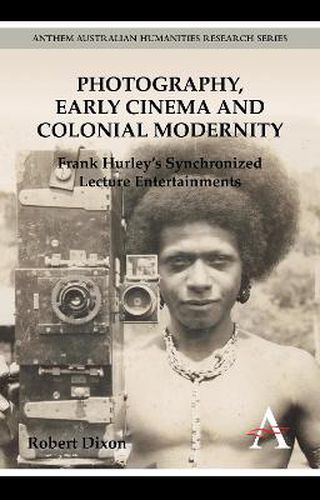Readings Newsletter
Become a Readings Member to make your shopping experience even easier.
Sign in or sign up for free!
You’re not far away from qualifying for FREE standard shipping within Australia
You’ve qualified for FREE standard shipping within Australia
The cart is loading…






‘Photography, Early Cinema and Colonial Modernity’ is not a biography of Frank Hurley the man; it is instead an examination of the social life of the many marvellous and meaningful things he made as a professional photographer and film maker. The focus of this volume surrounds the media events that encompassed these various creations - what Hurley called his ‘synchronized lecture entertainments’. These media events were at once national and international; they involved Hurley in an entire culture industry that was constantly in movement along global lines of travel and communication. This raises complex questions both about the authorship of Hurley’s photographic and filmic texts - which were often produced and presented by other people - and about their ontology, as they were often in a state of reassemblage in response to changing market opportunities. This unique study re-imagines, from inside the quiet and stillness of the archive, the prior social life enjoyed by Hurley’s creations amidst the complicated topography of the early twentieth century’s rapidly internationalizing mass-media landscape. As a way to conceive of that space, and of the social life of the people and things within it, this study uses the concept of ‘colonial modernity’.
$9.00 standard shipping within Australia
FREE standard shipping within Australia for orders over $100.00
Express & International shipping calculated at checkout
‘Photography, Early Cinema and Colonial Modernity’ is not a biography of Frank Hurley the man; it is instead an examination of the social life of the many marvellous and meaningful things he made as a professional photographer and film maker. The focus of this volume surrounds the media events that encompassed these various creations - what Hurley called his ‘synchronized lecture entertainments’. These media events were at once national and international; they involved Hurley in an entire culture industry that was constantly in movement along global lines of travel and communication. This raises complex questions both about the authorship of Hurley’s photographic and filmic texts - which were often produced and presented by other people - and about their ontology, as they were often in a state of reassemblage in response to changing market opportunities. This unique study re-imagines, from inside the quiet and stillness of the archive, the prior social life enjoyed by Hurley’s creations amidst the complicated topography of the early twentieth century’s rapidly internationalizing mass-media landscape. As a way to conceive of that space, and of the social life of the people and things within it, this study uses the concept of ‘colonial modernity’.